Boron trifluoride methanol complex
- CAS NO.:2802-68-8
- Empirical Formula: C2H8BF3O2
- Molecular Weight: 131.89
- MDL number: MFCD00071635
- EINECS: 220-543-9
- SAFETY DATA SHEET (SDS)
- Update Date: 2023-04-23 13:52:06
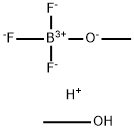
What is Boron trifluoride methanol complex?
Chemical properties
clear colourless to slightly yellow liquid
The Uses of Boron trifluoride methanol complex
Boron trifluoride-methanol complex solution can be used for the deprotection of acetylated amines of cyanine dyes to form products with free amino groups. It may be used for the conversion of sulfur-containing phosphoramidates to the corresponding phosphate methyl ester.
What are the applications of Application
Boron trifluoride-methanol-complex solution is a useful trifluoroborane for proteomics research
Flammability and Explosibility
Not classified
Properties of Boron trifluoride methanol complex
| Melting point: | -20 °C |
| Boiling point: | 58-60°C 4mm |
| Density | 1,222 g/cm3 |
| vapor pressure | 11.6hPa at 20℃ |
| refractive index | 1.34 |
| Flash point: | 68°C |
| storage temp. | Store below +30°C. |
| form | clear liquid |
| color | Colorless to Light orange to Yellow |
| Water Solubility | HYDROLYSIS |
| Sensitive | Moisture Sensitive |
| Merck | 14,1349 |
| BRN | 3693581 |
| Exposure limits | ACGIH: TWA 2.5 mg/m3; Ceiling 1 ppm OSHA: Ceiling 1 ppm(3 mg/m3) NIOSH: IDLH 25 ppm; Ceiling 1 ppm(3 mg/m3) |
| EPA Substance Registry System | Borate(1-), trifluoromethoxy-, (T-4)-, hydrogen, compd. with methanol (1:1) (2802-68-8) |
Safety information for Boron trifluoride methanol complex
| Signal word | Danger |
| Pictogram(s) |
 Flame Flammables GHS02  Corrosion Corrosives GHS05  Skull and Crossbones Acute Toxicity GHS06  Health Hazard GHS08 |
| GHS Hazard Statements |
H225:Flammable liquids H314:Skin corrosion/irritation H330:Acute toxicity,inhalation H370:Specific target organ toxicity, single exposure H373:Specific target organ toxicity, repeated exposure |
| Precautionary Statement Codes |
P210:Keep away from heat/sparks/open flames/hot surfaces. — No smoking. P233:Keep container tightly closed. P280:Wear protective gloves/protective clothing/eye protection/face protection. P303+P361+P353:IF ON SKIN (or hair): Remove/Take off Immediately all contaminated clothing. Rinse SKIN with water/shower. P305+P351+P338:IF IN EYES: Rinse cautiously with water for several minutes. Remove contact lenses, if present and easy to do. Continuerinsing. |
Computed Descriptors for Boron trifluoride methanol complex
New Products
4-AMINO-TETRAHYDRO-PYRAN-4-CARBOXYLIC ACID HCL 4-(Dimethylamino)tetrahydro-2H-pyran-4-carbonitrile 4-Aminotetrahydropyran-4-carbonitrile Hydrochloride (R)-3-Aminobutanenitrile Hydrochloride 3-((Dimethylamino)methyl)-5-methylhexan-2-one oxalate 1,4-Dioxa-8-azaspiro[4.5]decane 5-Bromo-2-nitropyridine Nimesulide BP Aceclofenac IP/BP/EP Diclofenac Sodium IP/BP/EP/USP Mefenamic Acid IP/BP/EP/USP Ornidazole IP Diclofenac Potassium THOMAIND PAPER PH 2.0 TO 4.5 1 BOX BUFFER CAPSULE PH 9.2 - 10 CAP SODIUM CHLORIDE 0.1N CVS ALLOXAN MONOHYDRATE 98% PLATINUM 0.5% ON 3 MM ALUMINA PELLETS (TYPE 73) LITHIUM AAS SOLUTION 2-Bromo-1-(bromomethyl)-3-chloro-5-nitrobenzene 2-Bromo-3-nitroaniline N-(3-Hydroxypropyl)-N-methylacetamide 3-Bromo-6-chloropyridazine 4-ethyl-3-nitrobenzoic acidRelated products of tetrahydrofuran

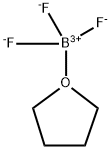

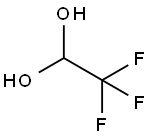

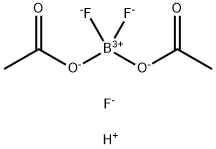

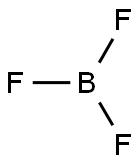
You may like
-
 Boron Trifluoride - Methanol Complex CAS 2802-68-8View Details
Boron Trifluoride - Methanol Complex CAS 2802-68-8View Details
2802-68-8 -
 Boron trifluoride methanol complex solution CAS 2802-68-8View Details
Boron trifluoride methanol complex solution CAS 2802-68-8View Details
2802-68-8 -
 1823368-42-8 98%View Details
1823368-42-8 98%View Details
1823368-42-8 -
 2-(3-(tert-butyl)phenoxy)-2-methylpropanoic acid 1307449-08-6 98%View Details
2-(3-(tert-butyl)phenoxy)-2-methylpropanoic acid 1307449-08-6 98%View Details
1307449-08-6 -
 Ethyl 3-(furan-2-yl)-3-hydroxypropanoate 25408-95-1 98%View Details
Ethyl 3-(furan-2-yl)-3-hydroxypropanoate 25408-95-1 98%View Details
25408-95-1 -
 2-Chloro-5-fluoro-1-methoxy-3-methylbenzene 98%View Details
2-Chloro-5-fluoro-1-methoxy-3-methylbenzene 98%View Details
1805639-70-6 -
 1784294-80-9 98%View Details
1784294-80-9 98%View Details
1784294-80-9 -
 Lithium ClavulanateView Details
Lithium ClavulanateView Details
61177-44-4
Statement: All products displayed on this website are only used for non medical purposes such as industrial applications or scientific research, and cannot be used for clinical diagnosis or treatment of humans or animals. They are not medicinal or edible.